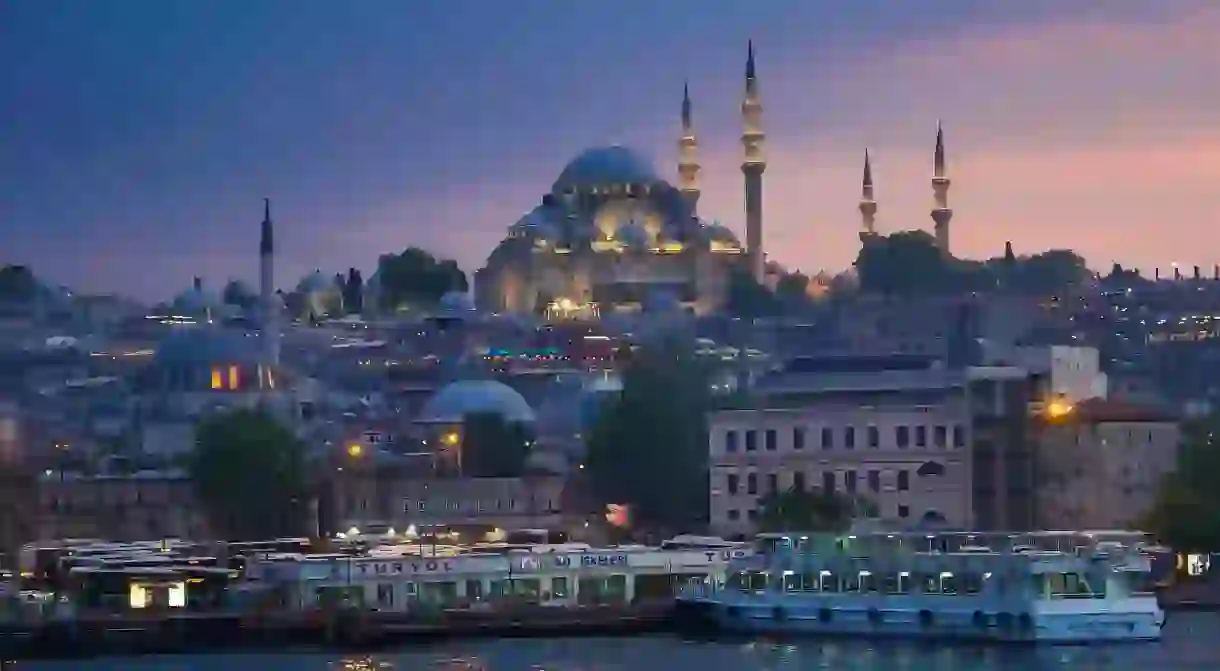The 9 Best Things to do in Istanbul’s Old City: Sultanahmet and Beyond

Whether it’s walking ancient city walls, haggling in historic bazaars, absorbing the sanctity of Ottoman mosques, sipping beer on a rooftop bar, watching the sun go down on the Golden Horn or relaxing in a Turkish bath, there’s always something more to do in Istanbul Old City, a place aptly known as ‘the city of the world’s desire’.
The heart of Istanbul remains its fascinating Old City, home to some of the most historic sites of this vibrant megapolis. Dramatically located on a peninsula pointing across the Bosphorus Strait to Asia, Sultanahmet was formerly the capital of the Byzantine and Ottoman empires.
Walk the ancient city walls from the Sea of Marmara to the Golden Horn
Historical Landmark

The mighty Walls of Theodosius kept the city safe from everybody from Attila the Hun to the all-conquering Muslim Arabs for a thousand years before falling to the Ottoman Turks in 1453. Running some 6.5 kilometres (four miles) across the spine of the peninsula from the Sea of Marmara to the Golden Horn, these late-Roman walls have survived remarkably well. Walk through neighbourhoods virtually untouched by tourism, past hole-in-the-wall restaurants, smoky tea shops and cottage gardens in the wall moat. Key sights include the Church of St Saviour in Chora (Kariye Museum), famed for its mosaics, the beautiful Ottoman Mihrimah mosque and the former palace of the Byzantine emperors, Blachernae (Tekfur Saray).
Pro-tips: For safety, avoid walking the walls at dusk. Reach the southern end of the walls by using the Marmaray metro line. At the end of your walk, catch a ferry down the scenic Golden Horn from Ayvansaray.
Steam clean yourself in a hammam
Architectural Landmark
Cleanliness is an integral part of Islam, and in the days before most homes had their own water supply, the hammam (Turkish bath) played a key role in the life of the city. Endowed by sultans, huge domed temples to hygiene arose amongst the city’s largely wooden houses. Visitors today flock to get the hammam experience, lounging on the warm marble, sluicing themselves with warm water from elegant copper bowls or surrendering to the pummelling and scrubbing of an expert masseuse. The Hürrem Sultan, Cağaloğlu and Çemberlitaş are just three gems in the Old City.
Pro-tip: The three hammams above have separate sections for men and women – for a mixed-sex session, try the Süleymaniye hammam.
Stroll the streets of Balat and Fener
Architectural Landmark

The narrow, cobbled streets of these two districts, tumbling down the hillside to the Golden Horn waterfront, were once the preserve of the city’s Jewish, Armenian and Greek communities. Some of the crumbling late-19th-century European-style terraced houses are being bought up and gentrified, with a plethora of new vintage-style cafés springing up around St George Greek Orthodox Cathedral. It’s a great area to just wander, but don’t miss the recently restored and quirky cast-iron Bulgarian church of St Stephens.
Pro-tip: Ferries run from the pier at Karaköy (easy to reach from Sultanahmet) and stop at both Fener and Balat.
Get lost in Istanbul's biggest bazaars
Bazaar, Shop

Pro-tip: Exit the spice bazaar via its western gate and wander up bustling Hasırcılar Sokak (‘street of the strawmakers’) to revel in hole-in-the-wall shop after shop selling everything from straw brooms to plump pistachios, all the while smelling the delicious aroma wafting from Kurukahveci Mehmet Efendi, one of Istanbul’s premier coffee roasters.
Explore the Galata waterfront at sunset
Architectural Landmark

Head down to the busy market area spanning Galata Bridge at sunset to see how the Golden Horn gets its name. Look up to the silhouette of the cascading domes and slender minarets of the Süleymaniye Mosque atop the city’s third hill, and grab a cold beer in one of the myriad café-bars built into the bridge itself.
Pro-tip: Take care walking along the parapet of the bridge for photos – it’s lined with local anglers casting their fishing hooks into the inlet below.
Discover the iconic Hagia Sophia and Blue Mosque
Cathedral, Museum

Pro-tips: Make sure you visit the square between the two buildings at night to see their architectural beauty enhanced by subtle lighting.
Visit Topkapı Palace, the nerve centre of an empire
Museum

Pro-tip: For a discounted, fast-track entry to the palace (and many other museums, including the Hagia Sophia), get a five-day Museum Pass Istanbul (this can be purchased online, from many hotels or at the museums themselves).

Enjoy a rooftop drink with sprawling city views
There are exceptions, but Istanbul’s Old City is not noted for its nightlife. Hotel bars, however, present some of the best options for an evening drink in the area. Try the terrace of the Hotel Arcadia Blue at sunset for breathtaking views across the domes and minarets of the Old City, or check out the rooftop of the nearby Pierre Loti Hotel.
Pro-tip: It’s not a hotel, and it serves tea, Turkish coffee and traditional fruit sherbet drinks rather than alcohol, but the views across the Galata Bridge and up the Bosphorus from the multiple terraces of the Ağa Kapısı café, hidden on a narrow street beneath the Süleymaniye Mosque, are sublime.
Buy vegetables for the week at Çarşamba (Wednesday) market
The city’s oldest, largest and most vibrant street market has given its name to an entire district: Çarşamba (‘Wednesday’ in Turkish). Sprawling for what seems like miles along the streets radiating out from the imperial Fatih Mosque, there’s stall after stall heaped with fruit, vegetables, household utensils and clothes. Çarşamba is noted for its conservatism, so expect to see plenty of shoppers dressed in traditional clothes, and come dressed modestly yourself.













